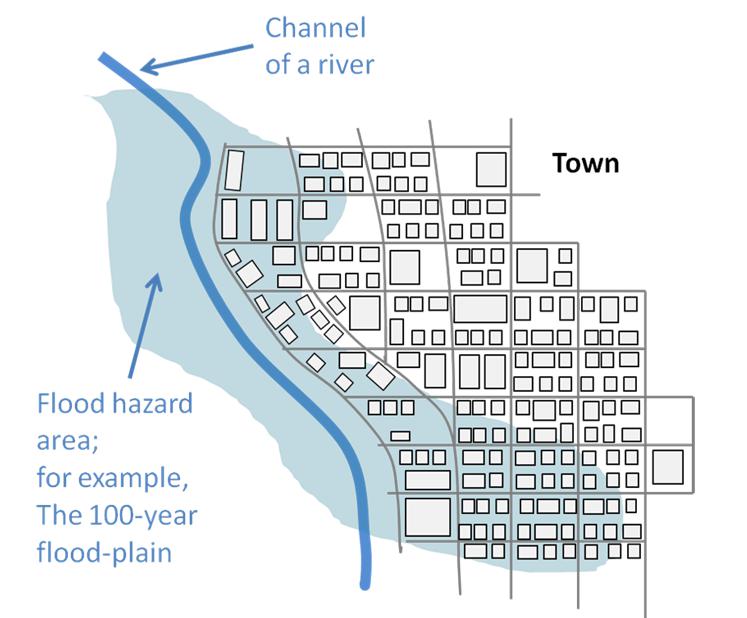When an event such as a flood or a tsunami strikes a community triggering the destruction or damage of infrastructure, it is highlighting the fact that such infrastructure is vulnerable, i.e. prone to be damaged or destroyed when such an event manifests itself. In the context of disaster-risk reduction, the disaster makes the following facts evident:
The geographical area where the community is settled is exposed to such a hazard; The infrastructure, assets and other processes and services which experienced damage or destruction are vulnerable.
Disaster Risk
According to the terminology of UNISDR, disaster-risk is defined as "the combination of the probability of an event and its negative consequences". In the technical sense, it is defined in terms of the combination of three terms: hazard, exposure and vulnerability.
When a town is established on the shores of a river, by carrying out a hydraulic analysis, hydrologists can identify and delineate the area that can be exposed to floods in the shores of the river channel. In some countries, such hazard areas outline the geographic extent of floods which have a period of return of 100 years. Any infrastructure located inside this area is exposed to floods. Civil engineers and other experts from the social and economic sciences can then assess the degree of vulnerability of the infrastructure located inside this area and can then assess the risk combining this information related to the flood hazard, the exposed elements and their degree of vulnerability.

Definitions and Terminology
Hazard is defined as "a dangerous phenomenon, substance, human activity or condition that may cause loss of life, injury or other health impacts, property damage, loss of livelihoods and services, social and economic disruption, or environmental damage".
Exposure is defined as the "people, property, systems, or other elements present in hazard zones that are thereby subject to potential losses". As stated in the UNISDR glossary, "measures of exposure can include the number of people or types of assets in an area. These can be combined with the specific vulnerability of the exposed elements to any particular hazard to estimate the quantitative risks associated with that hazard in the area of interest".
Vulnerability is defined as "the characteristics and circumstances of a community, system or asset that make it susceptible to the damaging effects of a hazard". As indicated by UNISDR, there are many aspects of vulnerability arising from various physical, social, economic, and environmental factors. Examples may include poor design and construction of buildings, inadequate protection of assets, lack of public information and awareness, limited official recognition of risks and preparedness measures, and disregard for wise environmental management.
Disaster-risk reduction aims to reduce the level of risk already faced by many communities worldwide. It is conducted through the implementation of policies and other measures as a way to control those underlying risk drivers such as unequal economic development, poorly planned and managed urban and regional development, the decline of regulatory ecosystem services, poverty and inequality, weak governance and weak local capacities.
Disaster risk reduction is conducted through efforts that aim:
To reduce the level of exposure to hazards;
To reduce the degree of vulnerability of people, communities, infrastructure, assets, processes, services, etc.;
To increase the level of preparedness of communities.
The term prevention is sometimes used to include all those measures that aim the reduce the level of exposure to hazards. Land-use norms that inhibit the construction of infrastructure in areas exposed to hazards are examples of preventive measures. Mitigation is used to characterize those measures that are aimed to reduce the degree of vulnerability. The enforcement of building codes incorporating seismic-resistant norms is an example of mitigation.Early warning systems are examples of measures associated with preparedness.
Information Management in disaster-risk reduction
In recent years, researchers and experts have developed methods to assess hazards, vulnerability, and coping capacities; as well as on ways to combine such assessments and to present them in the format of risk maps. Such maps are essential to develop strategies and plans to reduce the level of existing risks, and as a way to avoid the generation of new risks due to underlying social and economic risk drivers.
Comment list ( 0 )
